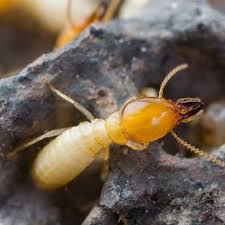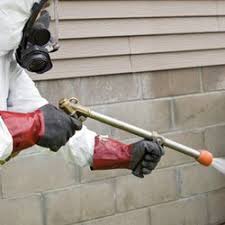Everything about Termite Control Drilling Holes
To termites, any violation of the tunnels or nests is a cause for alarm. When termites discover a potential violation, the soldiers normally bang their heads, apparently to entice other troops for defence and also to recruit additional workers to repair any breach.56 Additionally, an alarmed termite lumps into other termites which causes them to be alarmed and to leave pheromone trails to the disturbed area, which is also a means to recruit additional workers.56.
The pantropical subfamily Nasutitermitinae has a specialised caste of soldiers, known as nasutes, that possess the capability to exude noxious liquids through a horn-like frontal projection that they use for defence.155 Nasutes have lost their mandibles throughout the plan of evolution and must be fed by workers.59 A wide variety of monoterpene hydrocarbon solvents have been identified in the liquids that nasutes secrete.156 Similarly, Formosan subterranean termites have been known to secrete naphthalene to safeguard their nests.157.
Soldiers of those species Globitermes sulphureus commit suicide by autothysis rupturing a huge gland just beneath the surface of their cuticles. The thick, yellow fluid in the gland becomes quite sticky on contact with the air, entangling ants or other insects which are trying to invade the nest.158159 Another termite, Neocapriterme taracua, also engages in suicidal defence.
When soldiers guarding nest entrances are attacked by intruders, they engage in autothysis, creating a cube which denies entry to any attacker.161.


Not known Factual Statements About Termite Control Drilling Holes
Employees use several different strategies to take care of their dead, including burying, cannibalism, and avoiding a corpse entirely.162163164 To prevent pathogens, termites occasionally engage in necrophoresis, in which a nestmate carries a corpse from the colony to eliminate it elsewhere.165 Which approach is utilized depends on the nature of the corpse a employee is dealing with (i.e.
A species of fungus is known to mimic termite eggs, successfully avoiding its natural predators. These small brown balls, known as"termite balls", seldom kill the eggs, and https://innovativepestcontroladelaide.com.au/adelaide-pest-control/ in certain cases the employees tend to them.166 This fungus mimics these eggs by producing a cellulose-digesting enzyme known as glucosidases.167 A unique mimicking behavior exists between different species of Trichopsenius beetles and certain termite species within Reticulitermes.
This compound mimicry makes it possible for the beetles to integrate themselves within the termite colonies.168 The developed appendages on the physogastric abdomen of Austrospirachtha mimetes allows the beetle to mimic a termite worker.169.
Several species of ant have been known to capture termites to utilize as a brand new food source later on, rather than killing them. By way of instance, Formica nigra captures termites, and those who try to escape are instantly captured and driven underground.170 Certain Bonuses species of ants in the subfamily Ponerinae conduct these raids although other ant species move in alone to steal the eggs or nymphs.146 Ants such as Megaponera analis attack the exterior of mounds and Dorylinae ants assault underground.146171 Despite this, some termites and ants can coexist peacefully.
Examine This Report about Termite Control Day
54 species of ants are known to inhabit Nasutitermes mounds, both inhabited and abandoned ones.174 One reason many ants reside in Nasutitermes mounds is due to the termites' frequent occurrence in their geographic range; another is to shield themselves from flooding.174175 Iridomyrmex also inhabits termite mounds although no evidence for any kind of relationship (other than a predatory one) is known.116 In rare cases, certain species of Source termites reside inside active ant colonies.176 Some invertebrate organisms such as beetles, caterpillars, flies and millipedes are termitophiles and reside inside termite colonies (they are unable to survive independently).56 As a consequence, certain beetles and flies have evolved with their hosts.
Mounds may also offer shelter and heat to birds, lizards, snakes and scorpions.56.
Termites are known to carry pollen and regularly visit flowers,177 so are regarded as potential pollinators for any number of flowering plants.178 One blossom in particular, Rhizanthella gardneri, is regularly pollinated by foraging workers, and it's possibly the only Orchidaceae blossom in the world to be pollinated by termites.177
Little Known Facts About Termite Control Drilling Holes.
Many plants have grown powerful defences against termites. However, seedlings are vulnerable to termite attacks and need additional protection, as their defence mechanisms only grow when they have passed the seedling phase.179 Defence is typically achieved by secreting antifeedant chemicals into the woody cell walls.180 This lowers the ability of termites to efficiently digest the cellulose.
When kept near the extract, they get disoriented and eventually die.181.
Termite populations can be substantially influenced by environmental changes including those caused by human intervention. A Brazilian research investigated the termite assemblages of 3 sites of Caatinga under different levels of anthropogenic disturbance in the semi-arid region of northeastern Brazil were sampled using 65 x 2 m transects.182 A total of 26 species of termites had been present in the 3 websites, and 196 encounters were recorded in the transects.